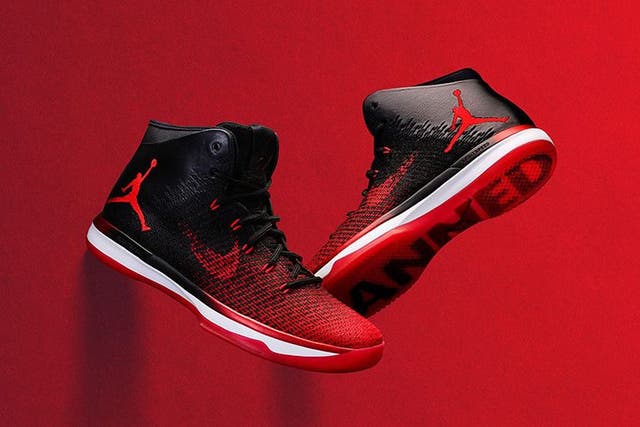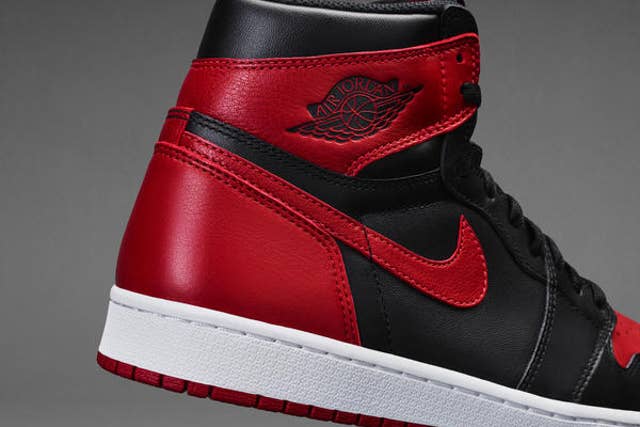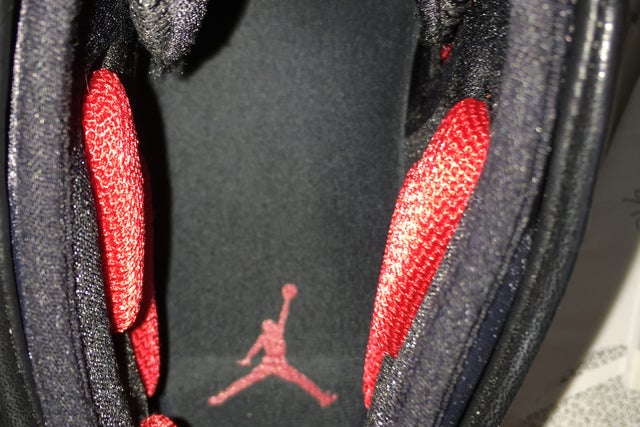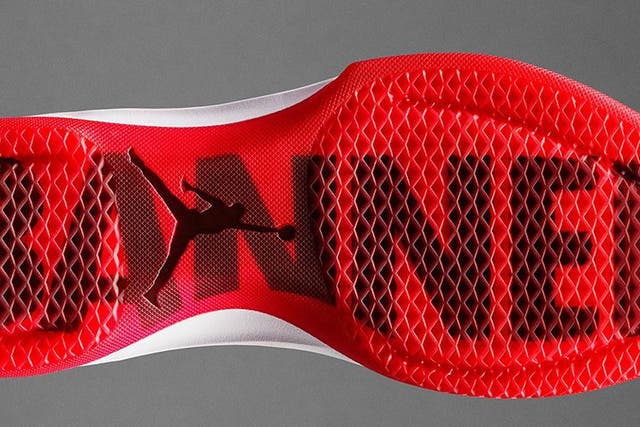
How MJ's banned sneakers influenced the design of the Air Jordan XXXI

If you’ve spent any time at all looking into the origin of Michael Jordan’s first signature sneaker from Nike, you’ve undoubtedly heard the story of how the Air Jordan 1 was banned by the NBA. This fact was even highlighted by an iconic advertisement, which featured the camera panning from Jordan’s head to his feet, settling on a shot of the shoes while an ominous-sounding voice explained what was going on.
“On September 15th, Nike created a revolutionary new basketball shoe. On October 18th, the NBA threw them out of the game.”
Now, technically, this is true. The red and black Air Jordans didn’t conform to the league’s dress code at the time, so Jordan and other players would have been prohibited from wearing these sneakers in actual NBA games.
But it was a sneaker Jordan wore before these — the Nike Air Ship — that was the original subject of the league’s ire. We know this because Jordan wore them in a preseason game against the Knicks on Oct. 18 1984, the same date that the league cited in its letter to Nike confirming the ban.

The rest of the story is that the league would levy a $5,000 fine each time Jordan wore them, but that Nike was happy to pay it in order to get the publicity.
“I didn’t have $5,000 to be giving anybody at that stage of my career,” Jordan said in a video promoting the release of this year’s version of the shoes, the Air Jordan XXXI. “Nike said they would pay $5,000 a game for the rest of the year because they were getting more hype about it.”
It gets hazy from there, because photos of Jordan’s shoes from that NBA season don’t seem to show him wearing any red and black colorways. He famously wore the sneakers in the slam dunk contest, when the league’s traditional uniform rules did not apply. But since the Air Jordan 1 would have indeed been banned in the colors that decked out the initial release, that made for a hell of an ad campaign, and a mythical origin story for what became basketball’s most iconic pair of sneakers.
*****
Jordan Brand went back to its roots to inform the design of the Air Jordan XXXI, which remains its flagship model and is consistently among the best-performing basketball shoe on the market with each successive release. The banned colorway drops at retailers in limited quantities Sept. 3, as does a red and black version of the banned Jordan 1 that will be among the most coveted retros of 2016.

The XXXI is the first basketball shoe to combine a woven material forefoot with a leather upper on the same sneaker. Speaking to a small group of reporters at a July launch event at the Brooklyn Bowl in Las Vegas, Jordan designer Tate Kuerbis explained why this is among the XXXI’s key features.
“We were definitely scratching our head on that one when that conversation came up,” he said. “Because we really like the style and the classic feel of the leather; it really does give you a good lockdown where you need it in the heel. But the flight weave is a really great performing material, so when you have that in the forefoot, with the flexibility, you can take it out of the box, wear it and it’s super-comfortable right away. So being able to merge those two together in a seamless way took a long time to figure out.
“We felt like the embroidery would be a good way to transition the two materials together. To a kid looking at that — every Jordan has something on it that you kind of just go ‘Wow, how did they do that?’ And that was the big feature of the shoe that we feel like turned out really well considering how long it took to figure out.”
Approximately 100 people were involved throughout the design process in order to make this innovative construction come to life. But Michael Jordan himself remains heavily involved to this day; the idea of the Nike swoosh fading into the Jumpman logo? That was his.
Jordan also influences the performance aspects of the sneaker, and does it in about as unique a way possible. There are six pods on the inside of the sneaker to provide a locked-in fit around the ankle area, and they wouldn't be there without Jordan's input during the design process.

"I don't get to sit in Ferraris very often," Kuerbis said at a panel discussion at the official unveiling. "[Jordan] opened the door and it was his new LaFerrari. I sat in it and it was amazing. You're just supported; it's the idea of a one-to-one fit. That immediately got me thinking about how can we design the inside of the shoe like that seat."
Nothing about the Jordan XXXI will be banned, of course, but there are design elements on both the sole and the tongue of the red and black colorway that reference the sneaker line’s origin. In looking so far back to the past for inspiration, Kuerbis explained that the initial irreverence associated with that very first advertisement was something that they were once again looking to embrace.
“The spirit these shoes represent is a feeling of defiance,” he said. “You know, you see the poster of MJ dunking with his gold chain, up in the air forever and defying gravity, wearing the Air Jordan I; you just can't stop looking at that poster. I think recreating and getting that feeling into a new game shoe is challenging, but it's one of the things we wanted to do — instill this almost magical quality."










